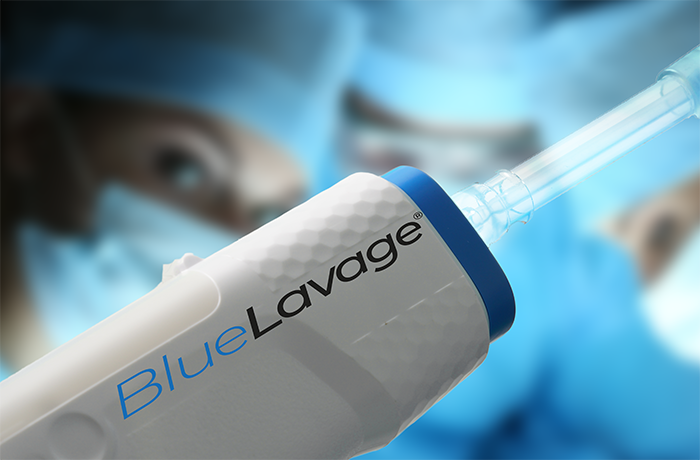Hospitals are not only among the largest producers of waste, but also among the largest energy consumers in the German economy: around six kilograms of waste are generated per hospital bed per day, and the energy consumption per bed corresponds to the annual requirements of four single-family homes.[1] In view of these figures, the topic of sustainability in hospitals is rapidly becoming more important. And solutions like the BlueLavage® Suction and rinsing systems are popular alternatives – both for purchasing and for users.
In contrast to conventional suction and irrigation systems, which are used in all knee and hip operations, the BlueLavage® not the entire device, but only the contaminated plastic part is disposed of. That sounds minor given the mountains of rubbish, but it is not. By reusing the BlueLavage's drive unit® In particular, resource-intensive parts such as circuit boards, copper wires, lithium batteries or motors end up not in (hazardous) waste. This saves not only on waste, but also on resource consumption for the production of new units. “The remaining plastic waste can be disposed of thermally, i.e. converted back into energy,” explains Olaf Thiessies, Managing Director of UTK-Solution GmbH.
Lower costs for more sustainability
A BlueLavage can do up to 150 times® Drive unit can be reused before it switches itself off. The fact that it switches off has nothing to do with the longevity or quality of the product, but rather with the certification as a class IIa medical device. That's why drive units - i.e. batteries, motors, circuit boards, etc. - don't go into the bin after this life cycle, but rather back to the manufacturer UTK Solution. Here the parts are prepared or recycled and made into new BlueLavage® systems processed. The hospital that returns the systems receives a new unit in exchange - a good deal.
Speaking of business: The BlueLavage® Systems are not more expensive to purchase. On the contrary, they are even cheaper if you consider that the one-off alternatives have the costs of resource consumption, the CO2 Emissions and environmental impact are not priced in at all. These come, for example, in the form of waste fees, CO2 - Taxes or expenses for eliminating the effects of climate change for hospitals are added as indirect costs.
75 percent less CO2
During the production of the BlueLavage® the developers at UTK Solution GmbH managed to create the CO2 Reduce emissions along the production and supply chain by 75 percent compared to conventional single-use products - from around 7 kg per unit to a good 2 kg. “We already had the CO during the development phase of the system2 Consumed with documented and different adjustment screws turned to reduce it. The type of plastic used, for example, has a big impact on CO2 Balance sheet, as well as the cardboard for the outer packaging. We really looked at every step to find the most sustainable solution. The remaining 2 KG CO2"We could not avoid these, we compensate for them through local projects in the region," says Olaf Thiessies. For its efforts, the company was then awarded the Energy Efficiency Prize from the NRW Efficiency Agency. However, this award is not a reason to rest, but rather an incentive to continue CO2,Turn the screw further down.
[1] https://www.abfallmanager-medizin.de
[:]
